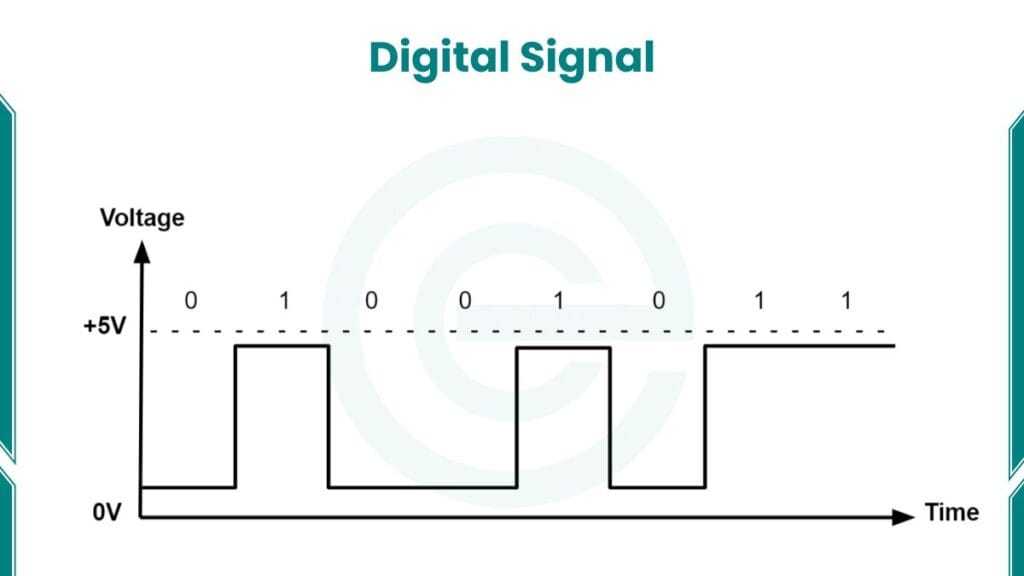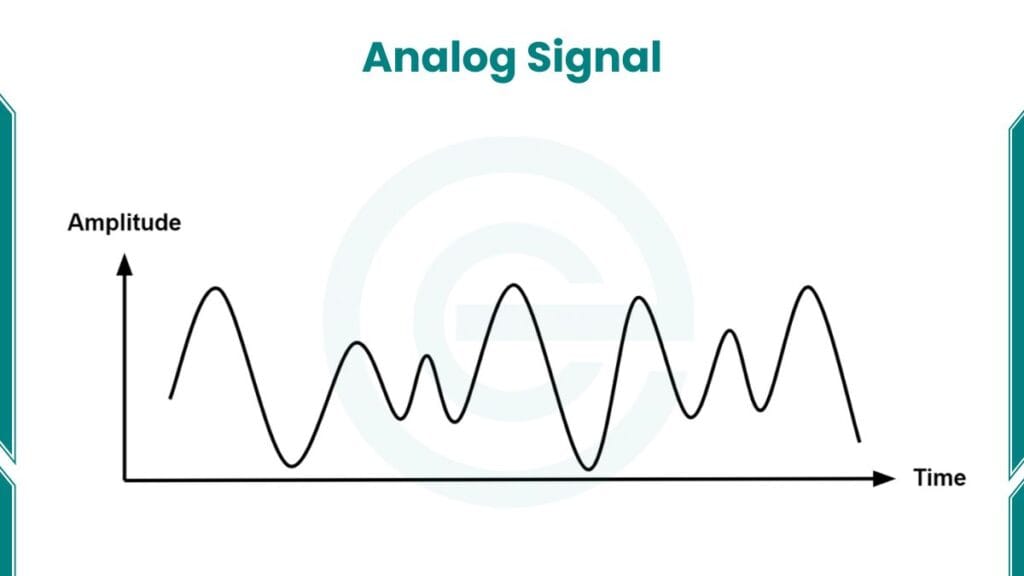A signal is a way of transmitting information from one place to another through a communication medium. In our everyday lives and technology, signals play an important role in communication and data transfer.
Signal Definition
A signal is any measurable quantity that changes over time or space and carries information. It can be considered a message or data sent from a source to a receiver. Signals can take many forms, such as electrical, light, sound, or even chemical signals.
Forms of Signals
Signals can be broadly classified into two main categories:
1. Digital Signal
A digital signal is a type of signal that represents data as a sequence of discrete values. These values are usually represented as a series of 0s and 1s. It is also known as binary code. Digital signals are widely used in modern electronic devices, computers, and communication systems.

Characteristics of Digital Signal
- Discrete values: Digital signals have a finite set of possible values.
- Noise resistance: They are less affected by noise and interference during transmission.
- Easy to process: Digital signals can be easily stored, processed, and manipulated by computers.
- Accuracy: They maintain their accuracy over long distances and multiple transmissions.
- Compression: Digital signals can be compressed to save storage space and bandwidth.
Analog Signal
An analog signal is a continuous signal in the form of a wave. The wave is known as a carrier wave. It can have an infinite number of values within a given range. Examples of analog signals include sound waves, radio waves, and the movement of a car’s speedometer needle.

Characteristics of Analog Signal
- Continuous values: Analog signals can have an infinite number of values within a range.
- Natural representation: They often represent natural phenomena more closely.
- Smooth transitions: Analog signals change smoothly over time without sudden jumps.
- Susceptible to noise: They are more easily affected by noise and interference during transmission.
- Infinite resolution: In theory, analog signals can have infinite resolution, although practical limitations apply.
Signal Processing
Signal processing is the art of manipulating signals to extract useful information or modify their characteristics. This field is crucial in many areas of technology and science. Some common signal-processing tasks include:
- Filtering: Removing unwanted noise or specific frequencies from a signal.
- Amplification: Increasing the strength of a signal.
- Compression: Reducing the amount of data needed to represent a signal.
- Analysis: Extracting meaningful information from signals.
Real-world Applications
Signals are used in various fields, making our modern world possible.
Here are some examples:
- Telecommunications: Mobile phones use digital signals to transmit voice and data.
- Medicine: ECG machines measure the heart’s electrical signals to monitor heart health.
- Control Systems: Thermostats use signals to control heating and cooling in buildings.
- Entertainment: Television and radio broadcasts rely on signal transmission.
- Navigation: GPS systems use signals from satellites to determine location.
Signal Modulation
Signal modulation is a technique used to transmit information efficiently over long distances. It involves changing one or more properties of a carrier signal to encode information. The three main types of modulation are:
- Amplitude Modulation (AM): Changes the strength or amplitude of the carrier signal.
- Frequency Modulation (FM): Alters the frequency of the carrier signal.
- Phase Modulation (PM): Modifies the phase of the carrier signal.
These modulation techniques are widely used in radio, television, and other wireless communications.
